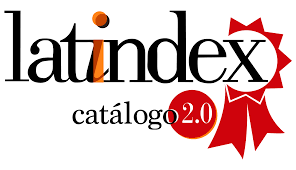Environmental impact (El) of anthropic activity in six awajun native communities in the province of Bagua, Amazonas, Peru, 2019
DOI:
https://doi.org/10.55996/dekamuagropec.v1i1.17Keywords:
Environmental impact, anthropogenic activity, awajunAbstract
The environmental impact (El) of anthropogenic activity in communities originating in the Amazon region is little known; in that sense, the objective of the research was to identify the El of anthropic activity in six native Awajun communities from the Amazon region of Peru, in 2019. The study is exploratory and descriptive. The El was determined using Leopold's two-way matrix (as modified by Beltran, 2005), which considers in its columns the five most important anthropic activities identified in communities: inadequate solid waste management, destruction ofthe slope and soil ofthe Marañón River, uncontrolled extraction ofGuadua angustifolia "bamboo", construction of ponds for family fish farming and intense cultivation ofTheobroma cacao "cacao" and Oriza sativa "rice"; and in its ranks, to the thirteen most notorious environmental impacts, observed in the communities. Five criteria were measured: duration, extent, intensity, reversibility and total magnitude; the overall environmental impact was ultimately assessed. The five anthropic activities were found to have the greatest negative impacts (-5 .0 and -4.4) on the loss of schooling and soil structure; on the other hand, anthropic activities have a positive impact ( 4.8) on the generation ofunderemployment.
Downloads
References
Beltrán O., R. (2005). Impacto Ambiental de la depredación del suelo agrícola, plaguicidas agroquímicos y residuos sólidos en el ecosistema de la Campiña de Moche (Trujillo, La Libertad, Perú). Ciencia y Tecnología, (3), 13-22.
Canter, L. W . (2008). Manual de evaluación de impacto ambiental: técnicas para la elaboración de los estudios de impacto. McGraw -Hill:Madrid.
Correa, S.W., Mello, C.R., Chou, S.C., Curi, N., Norton, L. (2016). Soil erosion risk associated with climate change at Mantaro River basin, Peruvian Andes. Catena 147:110-124. doi.org/10.1 O 16/j .catena.2016.07 .003.
Di Carro, M., Magi, E., Massa, F., Castellano, M, Mirasole, C., Tanwar, S, Olivari, E., Povero, P. (2018). Untarged approach for the evaluation of anthropic impact on the sheltered marine of Portofino (Italy). Marine Pollution Bulletin 131: 87-94. doi.org/10.1016/j.marpolbul.2018.03.059
Garzo, P.A., Dadon., J.R., Castro, L.N. (2019). Modelling environmental vulnerability of the Biosphere Reserve Parque Atlántico Mar Chiquito, Argentina, under agricultura! and urban impacts. Ocean and Coastal Management 170:72- 79. doi.org/10.1 O 16/j .ocecoaman.2019 .O 1.004
Gómez O., D. y Gómez V., M.T. (2013). Evaluación de impacto ambiental (3ra ed.). Edic. Mundi- Prensa: España. Govorushko, S. (2016). Human Impact on the Environment. An Illustrated World Atlas. Springer:New York.
Instituto Nacional de Estadística e Informática (INEI), Perú: Encuesta demográfica y de salud familiar (2016). Lima, Perú. Disponible en https://www.inei.gob.pe/media /MenuRecursi vo/publicaciones _digitales /Est/Lib 1433/index. html
Ochoa, P.A., Fries A., Mejía D., Bumeo J.I., Ruíz- Sinoga J. D., y Cerda A. (2016). Effects of climate, land cover and topography on soil erosion risk in a semiarid basin of the Andes. Catenal40:3l-42. doi.org/10.1 O 16/j .catena.2016.01.011.
Pontes, P.R.M., Cavalcante, R.B.L., Sahoo, P.K., da Silva, R., Sousa, M., Dall'Agnol, R., Siqueira, J.O. (2019).The role ofprotected and deforested areas in the hydrological processes of Itacaiúnas River Basin, eastern Amazonia. J. of Environmental Management 235:489-499. doi.org/10.1 O 16/j .jenvman.2019 .O 1.090.
Sifuentes C., J. (2014). Evaluación de impacto ambiental por extracción de Swietenia macrophylla (caoba) en áreas de permiso forestal de la comunidad nativa Santa Rosa en Yurúa [Tesis tít. prof.]. Univ. Nac. de Ucayali, Perú.URI:http://repositorio.unu.edu.pe/handle/ UNU/2227
Wu, CH., Ji, CH., Shi, B., Wang, Y., Gao, J., Yang, Y., y Mu, J. (2019). The impact of climate change and human activities on streamflow and sediment load in the Pearl River basin. Intern.J. of Sediment Research 34:307-321. doi.org/10.1 O 16/j.ijsrc.2019.01.002.
Zafar, M., Tiecher, T., Capoane, V., Troian, A., y Santos, D.R. (2017). Characteristics, lability and distribution of phosphorus in suspended sediment from a subtropical catchment under diverse anthropic pressure in Southern Brazil. Ecological Engineeringl00:28-45. doi.org/10.2016/j.ecoleng.2016.12.008.
Downloads
Published
How to Cite
Issue
Section
License
Copyright (c) 2020 Revista Científica Dékamu Agropec

This work is licensed under a Creative Commons Attribution-NonCommercial 4.0 International License.
Los autores que publican en esta revista aceptan los siguientes términos:
- Los autores conservan los derechos de autor y conceden a la revista el derecho publicación con la obra, simultáneamente licenciada bajo una licencia de Creative Commons CC By que permite a otros compartir el trabajo, pero citando la publicación inicial en esta revista.
- Los autores pueden celebrar acuerdos contractuales adicionales separados para la distribución no exclusiva de la versión publicada de la obra de la revista (por ejemplo, publicarla en un repositorio institucional o publicarla en un libro), pero citando la publicación inicial en esta revista.
- Se permite y anima a los autores a publicar su trabajo en línea (por ejemplo, en repositorios institucionales o en su sitio web) antes y durante el proceso de presentación, ya que puede conducir a intercambios productivos, así como una mayor citación del trabajo publicado (https://web-archive.southampton.ac.uk/opcit.eprints.org/oacitation-biblio.html)














